
Review on 📦 Geekworm NASPi 2.5 inch SATA HDD/SSD NAS Storage Kit for Raspberry Pi 4 Model B (Raspberry Pi 4 Not Included) by Robbie Guinn

Great product but heat dissipation could be improved. Bluetooth does not work.
I am satisfied with this product because it is one of the very few cases in which you can permanently install an SSD in the Pi 4B. The system runs much faster with an SSD than with a microSD card (transfer speeds are at least an order of magnitude faster, if not more, even compared to the fastest microSD). Assembling the case is surprisingly easy if you follow the video posted here on Revain. and also on Youtube where you can stop and go forward as you go. All you need is a small Phillips screwdriver. In order for the fan to work, you need to download the scripts from the Geekworm online wiki. The description there can be confusing sometimes, with links to Github etc., but in the end everything worked with the alias "xoff" (you can also turn it into a script). The outer shell is compact, sturdy, well made and looks good. I've been using it for about 2 days, no complaints so far. However, I am concerned about the possible overheating and throttling of the Pi. There are two reasons for this: 1) There is not enough space between the fan and the CPU/GPU or between the bracket holding the fan and two other smaller chips , which can also get very hot (Ethernet and USB controllers). If the space was just a few millimeters larger, we could add heatsinks to that space to help heat dissipation. But unfortunately there is no space, and you only have to rely on the fan. 2) If there are holes for ventilation on the sides and bottom, then the holes on the top will not align exactly with the fan. In fact, it appears that less than half of the air that can flow through a fan can be expelled from the top. The solution to problem (1) would be to make the case just a few millimeters taller and leave space between the fan and the cover. cooler chips. For (2) simply place the holes directly on the fan. I'm currently measuring around 50 degrees Celsius as the CPU temp when the Pi is idle, and it jumps to around 59 when I'm using Spyder (heavy Python IDE). I haven't stress tested it yet to see how hot it can get. When I start seeing temps over 80 I will update this review with a one star. Otherwise a great case, highly recommended! UPDATE: 06/21/21: Overheating was not an issue. However, the aluminum casing renders Bluetooth useless. I think WiFi would also be an issue, but I'm using Ethernet and the Pi is next to a WiFi router anyway. But forget Bluetooth. I was hoping I could play music on a speaker across the room, but no way, it won't connect. So my rating has been reduced from 5 to 4 stars. UPDATE 07/18/21. I solved my Bluetooth problem by buying a small USB dongle (Bluetooth 4.0). There are plenty of these at Revain for around $8. However, just getting the key wasn't enough: the interference caused by aluminum is so strong that depending on the direct path between the device you're trying to connect to and the Raspberry Pi, it still won't work. The final solution was to get a small USB extension cable as well (6 inches was enough). Then the key doesn't sit so close to the case anymore, there is no interfering noise and now I can hear music from across the room. The total cost for the cable + dongle was about $14, and of course you'll need to use a USB for that (one of the USB 2.0 ports can be plugged in). I believe a similar solution would work for WiFi, although I haven't tested it (I'm using an ethernet connection). returned, the case will no longer turn on the Raspberry Pi. If this were not the case, Pi would turn itself on in this situation. This is important because if you use VNC to connect when you're away from home, if there's a power outage you won't be able to reconnect until you get home and physically press the power button. This is problematic for people who travel and rely on the home computer to always stay on (and turn on again when power is restored). For comparison, I also have a QNAP NAS. It "remembers" whether it was on or off when power was turned off, and if it was on, it will turn back on when power is restored. Since this case helps turn your Pi into a NAS ("NASPI"), we hope it behaves the same way. I hope this is something that can be configured at the hardware level. While I like this case, it has these issues which is why I'm leaving it at 4 stars. If there is a new version that fixes these issues I will definitely buy it.
- Large selection
- Nothing here
New products
Comments (0)
Top products in 🖥️. Single Board Computers
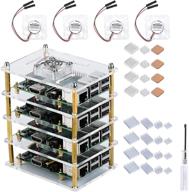
GeeekPi Raspberry Pi Cluster Case with Cooling Fan and Heatsink for Pi 4 Model B, 3 Model B+ & 3/2 Model B

11 Review
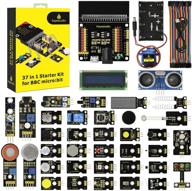
🎁 Ultimate BBC Micro bit Sensor Starter Kit: Keyestudio 37-in-1 Box with Tutorial, Compatible with V1.5 & V2, Gift for Kids and Adults (Microbit Board Not Included)

11 Review
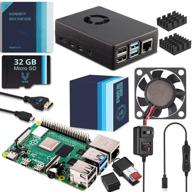
Vilros Raspberry Pi 4 4GB Complete Starter Kit - Black Fan-Cooled Aluminum Case for Heavy-Duty Performance

12 Review
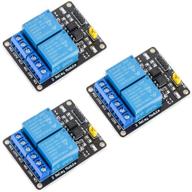
🌐 MCIGICM 2 Channel DC 5V Relay Module: Optocoupler Low Level Trigger Expansion Board for Arduino UNO R3, DSP, ARM, PIC, AVR, STM32, Raspberry Pi

11 Review
Another interesting products

36-Pack Black Rubber PC CPU/Case Fan Screws/Rivets Set for Computer

11 Review

🔧 Premium Repair Replacement Screws & Tools for MacBook Pro Retina 15"/13" - Complete Bottom Case Set

10 Review
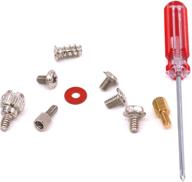
Glarks 660 Pieces Phillips Assortment Motherboard

10 Review
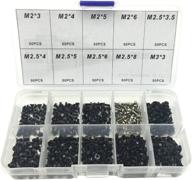
Comprehensive 500pcs Laptop Screw Kit Set for 🔩 IBM HP Dell Lenovo Samsung Sony Toshiba Gateway Acer

12 Review

